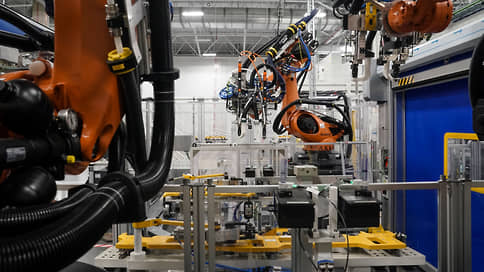The fog was weighed – Newspaper Kommersant No. 226 (7427) dated 12/06/2022
[ad_1]

The connection between economic uncertainty and investment is intuitively obvious, but so far no one has been able to measure it with any accuracy. The first and very preliminary results of the US Statistics MOPS (US Census) project allow for a starting estimate. An increase in uncertainty in estimates of future output in an industrial enterprise by two standard deviations from the median reduces next year’s investment by 6%. The same increase in uncertainty sharply increases the interest of industrial companies in borrowed money and temporary employment. Full MOPS data (launched back in 2010) will not be available until a year from now, and a general methodology for measuring the impact of uncertainty on investment is likely to be available in a few years.
The publication of the first and so far preliminary data from the Management and Organizational Practices Survey (MOPS) is unexpected: the project, launched by US Census in 2010 (first wave) as the largest statistical project to study management practices in US industry, was supposed to publish detailed data from statistical surveys of 35 thousand people. enterprises only in 2023. However, in November 2022, five project analysts, led by Stanford’s Nicholas Bloom, published processed data from part of the 2015-2021 MOPS surveys on the impact of uncertainty on investment in the NBER series.
Recall that since 2020, “uncertainty” has been at the center of macroeconomists’ interests: now they can only study “objective uncertainty” (for example, derivatives of exchange derivatives) – but not how uncertainty about future demand affects the willingness of investors to invest in projects. The term “uncertainty” in the same period was used dozens of times, for example, in the official communications of the Bank of Russia (on a par with or more often than other central banks), but it is too difficult to assess even in order of magnitude the impact of the growth of subjective uncertainty of management/investors on the future volume of investment. Even with the high role of budget investments and state guarantees in the Russian Federation, the “jumps” in investments associated with (highly unstable and poorly documented) uncertainty after 2014 are high and, apparently, strongly affect forecasts.
Uncertainty in the second and third wave MOPS surveys, in which the management of tens of thousands of US industrial companies, as part of the official annual statistical survey, was asked to predict the dynamics of future production indicators in various forms, including in the “minimax” format (failure in some cases was considered as “Knight’s uncertainty ”, an extreme case of uncertainty), was studied in particular detail. The key takeaway from Bloom and colleagues’ text is that, on average this decade, a two standard deviation increase in subjective uncertainty in next year’s MOPS surveys correlates with a 6% decline in a company’s fixed investment in the next year. This coincides in order of magnitude with the much less convincing work of 1999-2016 on small samples of industrial enterprises in Germany, Italy and Japan: uncertainty has probably become more “computable” in this aspect.
The work was quite “expensive”: the budget for data processing allocated by private and state funds exceeded $1 million, and the result may not seem too adequate: in fact, this is just one figure. In addition, Bloom and his colleagues, economists from the Fed, the business schools of the universities of Chicago and Tel Aviv, found fairly significant correlations of the obtained estimates of “subjective uncertainty” in industry with an increase in the attraction of debt (as opposed to equity) capital in investments and an increase in interest in hiring temporary staff: this is no longer intuitively as obvious as the connection between uncertainty and a decline in investment. Nevertheless, the figure of 6% (which, of course, refers to the US market with its entrepreneurial and managerial culture and cannot be mechanically extended to other markets) is important in itself: after the publication in 2023 of the full MOPS survey data and the development of statistical methods, the impact uncertainty about future investment will probably no longer be described in vague and troubling terms — at least it will not be possible to write off other effects in investments, which is now common practice.
[ad_2]
Source link






